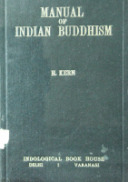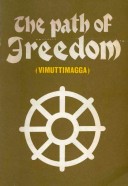Tìm Sách
Sách tiếng Anh-English >> The Legend of Emperor Asoka in Indian & Chinese Texts
Thông tin tra cứu
- Tên sách : The Legend of Emperor Asoka in Indian & Chinese Texts
- Tác giả : J. Przyluski
- Dịch giả : Dilip Kumar Biswas
- Ngôn ngữ : Anh
- Số trang : 242
- Nhà xuất bản : Firma K. L. Mukhopadhyay - Calcutta India
- Năm xuất bản : 1967
- Phân loại : Sách tiếng Anh-English
- MCB : 1210000002557
- OPAC :
- Tóm tắt :
MCB: 1210000002557
Pages: 242
TRANSLATOR’S NOTE
Since its publication from Paris in 1923, Jean Przyluski’s La Legends de l’ Empereur Asoka had attracted the attention of orientalists all over the world and had promptly taken its rank among classics in Indological literature. The book is divided into two parts: In the first of these the author gives us a minute and critical analysis of the northern Buddhist traditions regarding the Maurya emperor Asoka as embodied in the Asokavadana. Part II consists of a French translation of the Chinese text A-yu-wang-chuan, which is probably the earliest translation into Chinese of the original Sanskrit text of the Asokãvadãnã, as made by the Parthian monk Fa-k’in about 300 A.D., I have endeavoured in these pages to offer an English translation of Part I of M. Przyluski’s work which constitutes his original contribution towards a critical study of some important aspects of the Aáokan traditions of the north.
It will be observed that by his penetrating analysis, the author has adduced convincing grounds for believing that the traditions enshrined in the Asokãvadãna are older than those in the Vinaya of the Mola-Sarvastivãdins. He has distinguished three phases in the history of the progress of Buddhism and the Buddhist Church from the lower valley of the Ganges to the table-land of upper Asia, to each of which, according to him, corresponds a distinctive period in the history of Buddhist literature. These have been specified as the Magadha, Mathurã and Kashmir phases respectively. It has been further argued with the help of a wealth of detailed literary data that the Asokãvadãna is a product of the ‘Mathura period’. Regarding the nature and the date of the Asokãvadãna he has also arrived at positive conclusions He seeks to show that the text is a blend of composite elements which include an original Asokasũtra coated with the account of the First Council and other historical details about the early Buddhist Church. This Asokasũtra dealing with the exploits of the Maurya emperor, is placed by him between c. 150-30 B.C. The detailed and analytical study of the legend of Pindola Bhfiradvfija forming chapter V and the two very interesting chapters on “Asdka’s Hell” and “Development of Eschatological Ideas in Buddhism” constitute a few other valuable aspects of the author’s study that will be found particularly refreshing to the students of Buddhism. The significant parallels between Buddhism and certain aspects of Zoroastrianism emphasised in the last two sections, might suggest new lines of enquiry to researchers, specially in the back-ground of the intimate contact once established between the two faiths in the north-western borders of India. The value of M. Przyluski’s study for the students of history cannot also be denied. He has clearly established that the Asokan traditions had permeated the northern Buddhist world of Asia and had become an integral part of ‘the imagination of a considerable section of humanity, at an early date. An acquaintance with this mental frame may be profitably made a part of our historical studies unless by the cultivation of the historical discipline we choose merely to imply enumeration and interpretation of “events” excluding all allusions to human thought-process.
A slight change in the arrangement of chapters will be marked in the present volume. While the author did not include his discussion of the ‘Recensions of the Aáokãvãdãna’ in the series of chapters in the original, I have made it ‘chapter i’ in my translation. The number of chapters has thus increased to nine in the English version instead of eight as in the original. The author’s footnotes have all been placed at the ends of the respective chapters. The additional notes and comments introduced by me, have been found necessary sometimes in order to elucidate the cryptic references of the author or to elaborate some of his points that have been briefly stated; and sometimes to indicate alternative theories or lines of investigation that have come into the field since the publication of his work. These observations also will be found at the ends of the chapters, marked ‘translator’. I regret to have to state that it has not been possible always to maintain uniformity in the spelling of proper names or regularity in the use of diacritical marks a glaring instance of which is the printing of the name Asanga as Asana on pages 191-92. This and some other notable irregularities and misprints have been noticed in the errata at the end.
In conclusion, I consider it my pleasant duty to offer my gratitude and thanks to all those who have helped me directly or indirectly in my task. I may start by paying my respectful tribute to the memory of the late Professor Prabodh Chandra Bagchi M.A. (Cal.) Dr. ẻs.-Lettres (Paris) to whom I owe my interest in Continental Indology. To Dr. Dinesh Chandra Sircar, Carmichael Professor and Head of the Department of Ancient Indian History and Culture, University of Calcutta I am grateful for the interest he has taken in the progress of the work. A word must be said about the unfailing courtsey and co-operatỉon received from Sri Kanai Lai Mukhopadhyay of Messrs. Firms K. L. Mukhopadhyay who has taken the responsibility of publishing the present volume as well as from Sri Biman Ranjan Sinha who has designed the jacket. My thanks are further due to Sri Sukumar Sengupta, lecturer in Pali, University of Calcutta, for the loan of an important book of reference and to my wife Bharati for ungrudging assistance in the task of reading the proofs. I alone am however responsible for any mistake I may have committed in preparing the book for the press, as also for the opinions expressed therein.
Department of History Dilip Kumar Biswas
Presidency College
Calcutta.
August 23. 1967
Bhãdra 6, 1374 B. S.
AUTHOR’S PREFACE
In order to know primitive Buddhism one must take into consideration the traditions concerning its founder. The Buddha legend, besides containing informations, however imperfect, on doctrine, has unfolded itself gradually in the bosom of the communities of the faithful. It is therefore necessary in the beginning to study the history of these communities, their inclinations, dogmas and geographical distribution. Only by gaining an intimate knowledge of the rival sects one can afterwards make an attempt to extricate the common doctrine that preceded them and then one may as well have a chance to get an insight into the career, personality and teaching of the Master.
It is well-known that among the various schools of Buddhism, that of the Sthaviravãda had Pali for its sacred language while the religious literature of the Sarvastivãdins had been worded in Sanskrit. The authors of the Sthaviravãda School are much better known than those of the rival sects. Yet judging by the great quantity and value of the works it has left, it appears that the Sarvastivãda School is no less important in any field and that during a long succession of centuries it has preached the doctrine with vigorous enthusiasm.
When almost simultaneously Edouard Huber and M. Sylvain Lévi discovered that certain stories of the Divyãvadũna were drawn from the Asokavadana while the majority of others formed part of the Vinaya of the Mala-Sarvãstivãdins, an important point in the history of the Buddhist sects was gained; it became evident that the three works, based on common traditions were closely connected, and counted among the most important texts of the Sarvfistivadin School (Edouard Huber Sources du Divyãvadãna B. E. F. E. O. VI Nos. 1-2; Sylvain Lévi Let Elements de formation du Divyũvadãna T’oung Pao VIII pp. 105-22)
In the beginning of the year 1914, on the advice of Ml Sylvain Lévi I attempted the study and translation of different texts extracted principally from the Asokavadãna and the Vinaya of the Mala-Sarvăstivãdins. That study was interrupted by the war. My teacher desired very much to undertake to revise and publish the translated texts. He had them preceded by an illuminating preface in which he put in relief the various conclusious of the publication. “The work makes it quite clear,” wrote M. Sylvain Lévi, “that the Mũla-Sarvãstivãda School had its positive links with Kashmir and its neighbouring regions. If it has chosen Sanskrit as its sacred language, that choice appears to attest well the privileged position of Sanskrit as the literary language of Kashmir about the time when the redaction of the Vinaya took place. (Le Nord-Ouest de I’ Inde dans le Vinaya des Sarvãstivãdin et les textes apparentc’s J. A. 1914 II p. 494).
This first work led gradually to more extensive researches. If it does no longer appear doubtful that the Vinaya of the Mala-Sarvastivãdins has received its definite form in Kashmir or in some neighbouring country, it is no less certain that it has not been developed all at once. That monumental work in which has been incorporated an entire collection of stories, legends and sũtras along with fragments having reference to discipline, could only have been compiled in an epoch when the religious literature of the Sarvãstivãdins was already highly developed. Is it not possible to get hold of some of these productions in a less evolved from, which would be very close to the original? For the solution of this problem the Asókã-vadãna is of supreme importance. One precisely finds there in a very archaic form the traditions comparable to those that the Vinaya of the Mala-Sarvãstivadins has recorded with the rest,- notably a biography of the early patriarchs of the Church and the narrative of a journey which the Buddha was supposed to have undertaken to the north-west of India.
In striving chiefly to throw into relief the features that manifest the aspirations of the author and through them his personality, and reveal the intentions, sympathies and the desires of the members of his monastery and his Church, I hope to have demonstrated that the Asokãvadãna had been composed by a monk of the Mathurã region belonging to the Mola-Sarvfistivada School who had lived more than a century before Kanishka, that is to say, long before the final composition of the actual Vinaya of the Mala-Sarvastivãdins.
Thus localised in time and space, the Asokãvadãna stands as a historic document of the first order which enables us to lay hold of the Buddhist tradition in a decisive moment of its development, when the Church on its way to expansion towards the north-west overstepped the narrow circle of the early Magadhan Communities and rapidly assimilated the ancient Biahmanical civilisation of Madhyadesa.
The Asokãvadãna enables us to view under a new aspect a number of very diverse subjects viz. the history of the First Council and the local communities, the lives of the patriarchs, etc. It was impossible to study the work without casting a glance at all these directions. In a simple monograph I have been obliged to make an effort to draw the general indications without concealing from myself the risks actually involved in such an enterprise. Later when we shall possess a large number of monographs on the sacred texts, the field of conjecture will grow narrower; some tracks may have to be recrossed, while others must be abandonned.
The present volume was in impression when M. Paul Pelliot had the kindness to draw my attention to a fragment of the Ta-che-tu-luen a translation of which will be found in Appendix I. This eminently illuminating text contrasts the Vinaya of Mathurã which included the Jãtakas and the Avadãnas, with the Vinaya of Kashmir that had rejected them. This would further affirm and elucidate the distinction posed between the Schools of Mathura and Kashmir—a distinction which I consider fundamental. Henceforth one knows that each of these religious centres which were undoubtedly the two poles of the Sarvastivãdin world, had its particular Vinaya. That of Mathurã is very likely to have been lost; since the Avadãnas formed part of it, it is just possible, it might have included the Asokãvadãna as well. We are permitted to ask ourselves whether the Divyãvadãna, a collection of legends which had circulation in the Sarvãstivãdin world, is not drawn almost entirely from the Vinaya of Mathurã. The enormous Vinaya of the Mũla-Sarvãstivãdins crowded all over with the Jatakas and the Avadãnas is possibly itself only the ancient Vinaya of Kashmir enlarged by its Vibhãshã and enriched by fragments borrowed from the literature of the sect, As one enumerates its treasures, the Vinaya of the Mũla-Sarvãstivãdins appears up to a certain point to be the compendium of the Sarvãstivãda School.
In setting forth in the preface the genesis of the present work, I have expressed very inadequately what I owe to M. Sylvain Lévi. Among others to whom I have obligations, I desire particularly to thank M. Paul Pelliot whose advice has proved valuable to me and to whom I am indebted for a whole series of observations.
 Facebook
Facebook
 Google
Google
 Google+
Google+


















